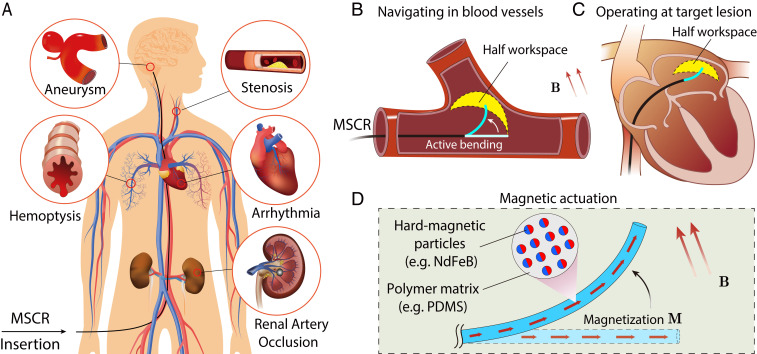Fig. 1.
MSCRs for minimally invasive treatments. (A) Cardiovascular diseases in hard-to-reach areas across the human body where MSCRs can find utility. (B) Schematic illustration of the active bending of the MSCR navigating in a complex blood vessel. The workspace is defined as the area of attainable locations by the MSCR’s end effector via tuning the actuation magnetic field. (C) Schematic illustration of operating the MSCR at lesion tissues in atrial fibrillation ablation. (D) Schematic illustration of the distal portion of an MSCR in which hard-magnetic particles (e.g., NdFeB) are dispersed in the polymer matrix (e.g., silicone).

